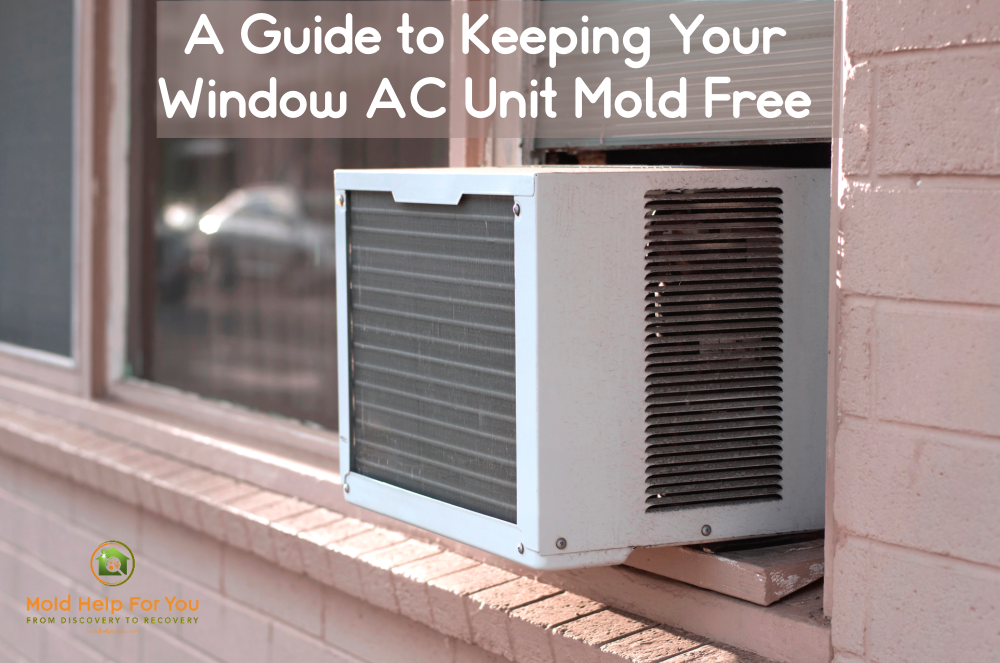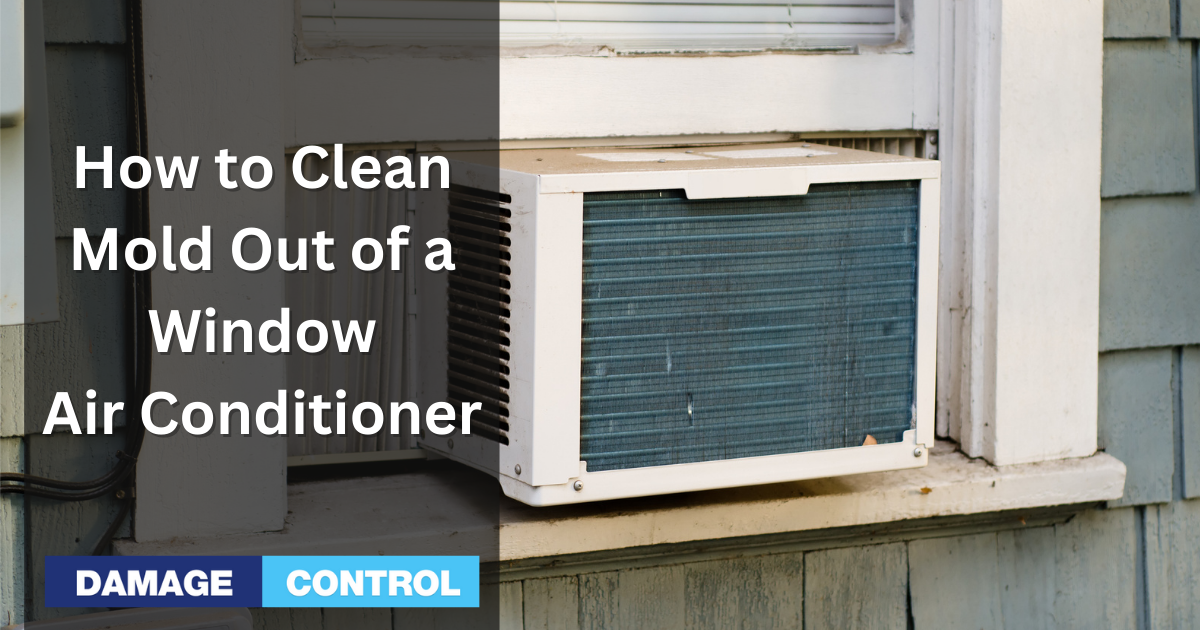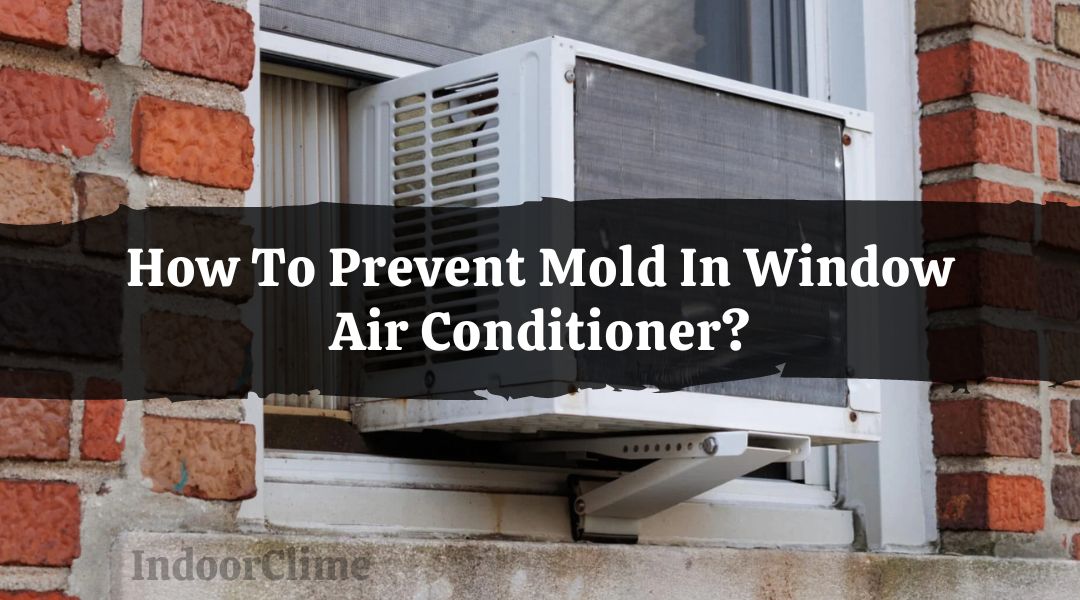How To Keep Window Ac From Getting Moldy

Window air conditioners are a lifesaver during hot summer months, but they can also become breeding grounds for mold if not properly maintained. Mold growth not only impacts air quality but can also trigger allergies and respiratory problems. This article provides a comprehensive guide on how to prevent mold from forming in your window AC unit, offering practical advice for homeowners and DIY enthusiasts.
Understanding Why Mold Grows in Window ACs
Before diving into prevention, it's crucial to understand why mold thrives in window ACs. The combination of moisture, darkness, and organic matter (dust, pollen) creates an ideal environment for mold spores to flourish.
- Moisture: Condensation is a natural byproduct of the cooling process. If this moisture isn't properly drained or evaporates, it provides the necessary water for mold growth.
- Darkness: The enclosed interior of the AC unit offers a dark environment, which mold prefers.
- Organic Matter: Dust, pollen, and other airborne particles accumulate inside the unit, providing a food source for mold.
Preventive Maintenance: Your First Line of Defense
Regular maintenance is the most effective way to prevent mold growth. Here’s a step-by-step guide:
1. Regular Cleaning of the Air Filter
The air filter is the first line of defense against dust and debris. A clogged filter restricts airflow, making the unit work harder and increasing the potential for condensation.
- Turn off and unplug the AC unit. This is crucial for safety.
- Locate the air filter. It's usually behind the front grille, which can be easily removed.
- Remove the filter. Note the direction it faces for proper reinstallation.
- Clean the filter. You can vacuum it or wash it with mild soap and water. Ensure it's completely dry before reinstalling.
- Reinstall the filter. Ensure it's facing the correct direction.
Frequency: Clean the air filter every 2-4 weeks, depending on usage and air quality.
2. Cleaning the AC Unit Internally
The internal components of the AC unit, especially the cooling coils and drain pan, can accumulate dust and moisture. Regular cleaning prevents mold growth.
- Turn off and unplug the AC unit. Safety first!
- Remove the outer casing. Usually held in place by screws. Consult your AC's manual for specific instructions.
- Vacuum the interior. Use a brush attachment to remove dust and debris from the cooling coils and other components.
- Clean the cooling coils. Use a fin comb to straighten bent fins and improve airflow. Then, spray the coils with an AC coil cleaner, available at most hardware stores. Follow the product instructions carefully.
- Clean the drain pan. This is where condensation collects. Use a wet/dry vacuum to remove any standing water. Clean the pan with a solution of bleach and water (1 part bleach to 10 parts water). Let it sit for 15 minutes, then rinse thoroughly.
- Reassemble the unit. Ensure all components are dry before reassembling.
Frequency: Clean the interior of the AC unit at least twice a year, ideally before and after the cooling season.
3. Ensuring Proper Drainage
Proper drainage is critical to prevent moisture buildup. If the drain is clogged, water will accumulate, creating a breeding ground for mold.
- Locate the drain hole. It's usually on the bottom or back of the unit.
- Check for clogs. Use a wire or pipe cleaner to clear any blockages.
- Tilt the unit slightly outward. This helps ensure that condensation drains properly.
4. Addressing Persistent Moisture
Even with regular cleaning and proper drainage, some units may experience persistent moisture issues. Here are some solutions:
- Dehumidifier: Use a dehumidifier in the room to reduce overall humidity levels.
- Air Circulation: Ensure adequate air circulation around the unit. Avoid blocking the vents.
- Consider a Unit with Anti-Mold Features: Some newer models come with anti-mold coatings or UV lights that inhibit mold growth.
Tools and Supplies You'll Need
- Screwdriver
- Vacuum cleaner with brush attachment
- Fin comb
- AC coil cleaner
- Bleach
- Water
- Spray bottle
- Wet/dry vacuum
- Wire or pipe cleaner
- Gloves
- Safety glasses
Dealing with Existing Mold
If you discover mold in your window AC unit, it's essential to address it promptly. Small amounts of mold can often be cleaned, but severe infestations may require professional help.
- Turn off and unplug the AC unit.
- Wear protective gear. This includes gloves, a mask, and safety glasses.
- Clean the affected areas. Use a solution of bleach and water (1 part bleach to 10 parts water) to scrub away the mold.
- Rinse thoroughly. Ensure all traces of bleach are removed.
- Dry completely. Use a fan or dehumidifier to dry the unit thoroughly.
Warning: If the mold infestation is extensive or if you have allergies or respiratory problems, it's best to call a professional HVAC technician.
When to Call a Professional
While many maintenance and cleaning tasks can be handled DIY, some situations require professional expertise.
- Extensive Mold Growth: If the mold infestation is severe or widespread, a professional has the tools and expertise to safely remove it and prevent recurrence.
- Complex Repairs: If you suspect a mechanical issue, such as a refrigerant leak or compressor failure, it's best to consult a professional.
- Allergies or Respiratory Problems: If you have allergies or respiratory problems, cleaning mold yourself can be hazardous.
- Uncertainty: If you're unsure about any aspect of the cleaning or repair process, it's always best to err on the side of caution and call a professional.
Estimated Repair Costs
The cost of repairing or replacing a window AC unit can vary depending on the severity of the problem and the type of unit. Here are some general estimates:
- Cleaning and Mold Removal: $50 - $150 (DIY) or $100 - $300 (professional)
- Air Filter Replacement: $10 - $30
- Coil Cleaning: $50 - $100 (professional)
- Drainage Repair: $50 - $150 (professional)
- Unit Replacement: $100 - $500 (depending on size and features)
Note: These are just estimates. Actual costs may vary depending on your location and the specific service provider.
Choosing the Right Window AC Unit
When purchasing a new window AC unit, consider models with features that help prevent mold growth.
- Anti-Mold Coating: Some units have a special coating on the coils and other components that inhibits mold growth.
- Easy-to-Clean Design: Look for units that are easy to disassemble and clean.
- Remote Control with Timer: Allows you to run the fan after the cooling cycle to dry out the unit.
Tips for Extending the Life of Your Window AC
Proper maintenance not only prevents mold growth but also extends the life of your window AC unit.
- Winter Storage: When the cooling season is over, clean the unit thoroughly, dry it completely, and store it in a dry place.
- Proper Installation: Ensure the unit is properly installed and sealed to prevent drafts and moisture intrusion.
- Regular Checkups: Schedule regular checkups with an HVAC professional to identify and address potential problems early on.
Common Window AC Issues (and How to Address Them)
- Unit Not Cooling: Check the air filter, cooling coils, and refrigerant levels. A dirty filter or low refrigerant can reduce cooling efficiency.
- Unit is Noisy: Clean the unit and ensure that all components are properly secured. Loose parts can cause rattling and vibrations.
- Water Leaking: Check the drain hole for clogs. Also, ensure the unit is tilted slightly outward.
- Unit Not Turning On: Check the power cord, circuit breaker, and thermostat settings.
By following these tips and guidelines, you can effectively prevent mold from growing in your window AC unit and enjoy clean, cool air all summer long. Remember that regular maintenance is key, and don't hesitate to call a professional when needed.










